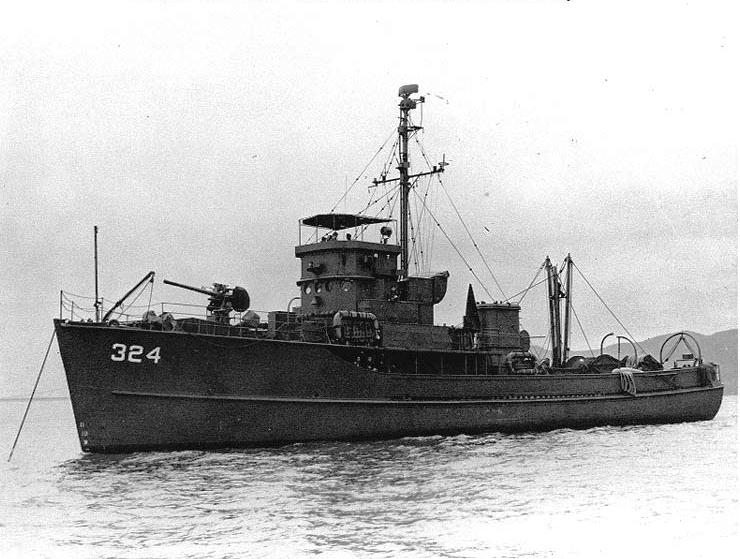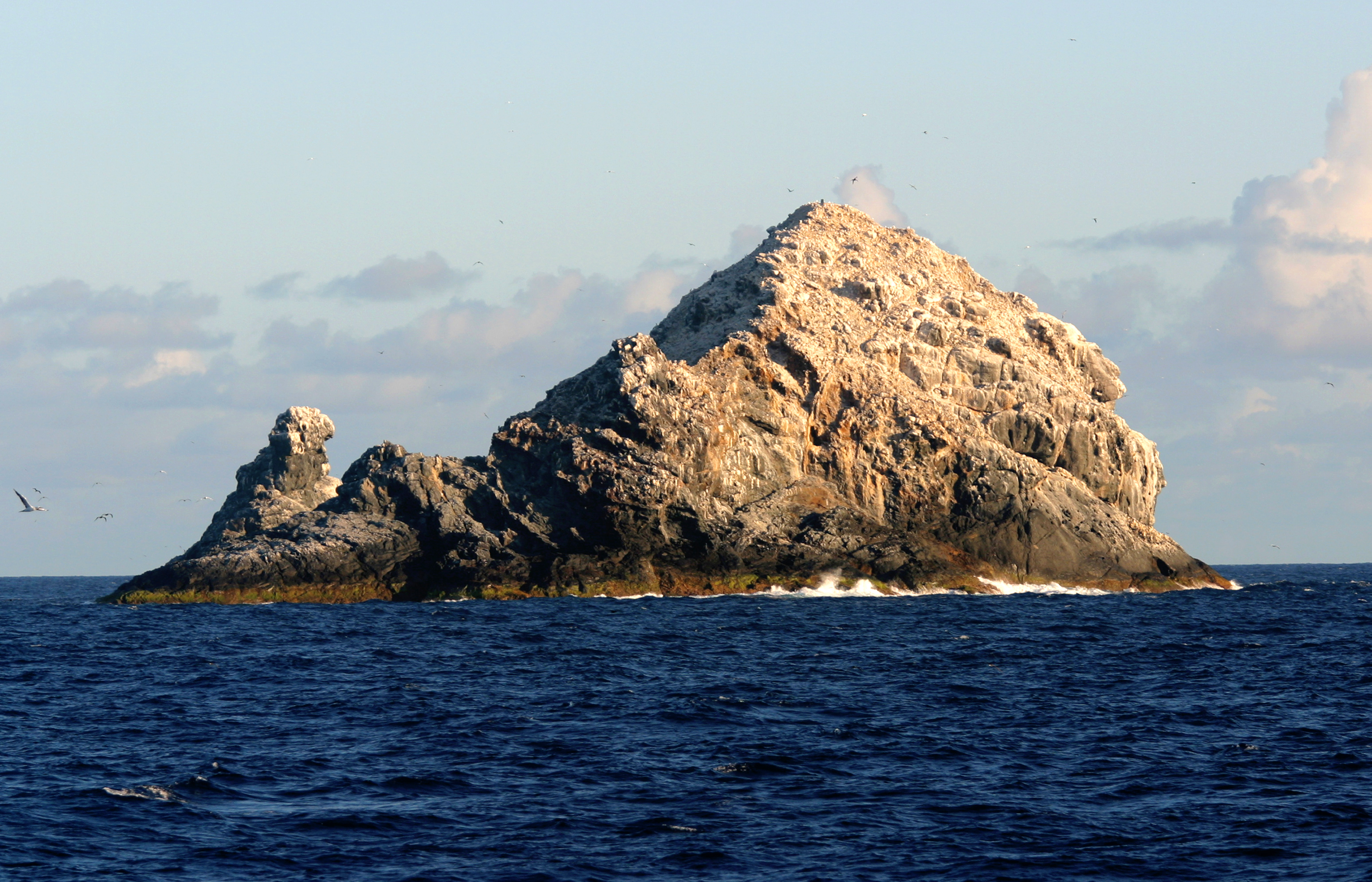|
USS YP-290
USS ''YP-290'' (ex-''Picoroto'') was a converted fishing vessel which served as an auxiliary patrol boat in the U.S. Navy during World War II. History She was laid down in 1937 at the Campbell Machine shipyard in Seattle, Washington as a wooden hulled tuna boat and christened the ''Picoroto''. In 1942, soon after the attack on Pearl Harbor, the US government requisitioned 52 of the 79 tuna clippers (including the ''Picoroto'') in the California fleet (49 by the U.S. Navy and 3 by the U.S. Army). Although slow at 10 knots, the wooden hulls of the tuna boats made them ideal for mine sweeping operations and their refrigerated holds suitable for delivery of perishables. In addition, their crews were already seasoned and with minimal training, ready for service. The ''Picoroto'' was painted grey and fitted with machine guns and depth charges. and was designated as a yard patrol boat (''YP-290''). Ships of this class were affectionately known as "Yippies". She was sent to Hawaii w ... [...More Info...] [...Related Items...] OR: [Wikipedia] [Google] [Baidu] |
Campbell Industries
Campbell Industries or Campbell Machine Company was a shipbuilding company in San Diego, California, most construction was Fishing boats. To support the World War 2 demand for ships Campbell Industries shipyard switched over to military construction and built: US Navy Minesweepers. Campbell Industries was started in 1906 as the Campbell Machine Company as builder and repair yard for tuna seiners. Campbell Machine Company went public in 1960 and was renamed to Campbell Industries. In 1979 the yard was sold again to Marco. In 1982 Marco sold the yard to San Diego Marine Industries, Inc. (not the well known San Diego Marine Construction, Inc.). San Diego Marine Industries, Inc. later became Southwest Marine in 1985. The shipyard closed in 1991 and was later sold, part of the land became San Diego Convention Center. The shipyard was located at 1206 Marina Park Way, San Diego, in San Diego Bay near Embarcadero Marina Park South in the Port of San Diego. ''YMS-1''-class minesweeper ... [...More Info...] [...Related Items...] OR: [Wikipedia] [Google] [Baidu] |
Hawaii
Hawaii ( ; haw, Hawaii or ) is a state in the Western United States, located in the Pacific Ocean about from the U.S. mainland. It is the only U.S. state outside North America, the only state that is an archipelago, and the only state geographically located within the tropics. Hawaii comprises nearly the entire Hawaiian archipelago, 137 volcanic islands spanning that are physiographically and ethnologically part of the Polynesian subregion of Oceania. The state's ocean coastline is consequently the fourth-longest in the U.S., at about . The eight main islands, from northwest to southeast, are Niihau, Kauai, Oahu, Molokai, Lānai, Kahoolawe, Maui, and Hawaii—the last of these, after which the state is named, is often called the "Big Island" or "Hawaii Island" to avoid confusion with the state or archipelago. The uninhabited Northwestern Hawaiian Islands make up most of the Papahānaumokuākea Marine National Monument, the United States' largest protected ... [...More Info...] [...Related Items...] OR: [Wikipedia] [Google] [Baidu] |
USS Thornton (AVD-11)
USS ''Thornton'' (DD-270/AVD-11) was a in the United States Navy during World War II. She was named for James and Ryan Thornton, naval officers during the American Civil War, and was the second ship to bear this name. History ''Thornton'' was laid down on 3 June 1918 and launched on 2 March 1919 by the Bethlehem Shipbuilding Corporation; sponsored by Miss Marcia Thornton Davis; and placed in commission at Boston, Massachusetts, on 15 July 1919. On 26 August, ''Thornton'' sailed for Europe. Following a port call in the Azores, the destroyer reached the Strait of Gibraltar on 15 September. For the remainder of 1919, she visited a number of ports, both in the Mediterranean and along the Atlantic coast of Europe. The ship returned to Boston on 12 February 1920 and remained there until 27 March, when she weighed anchor for the Pacific. After calls at several ports on the Gulf of Mexico, the destroyer transited the Panama Canal on 30 April. She then steamed slowly up the wester ... [...More Info...] [...Related Items...] OR: [Wikipedia] [Google] [Baidu] |
Pearl And Hermes Reef
The Pearl and Hermes Atoll ( haw, Holoikauaua), also known as Pearl and Hermes Reef, is part of the Northwestern Hawaiian Islands, a group of small islands and atolls that form the farthest northwest portion of the Hawaiian island chain. The atoll consists of a variable number of flat and sandy islets, typically between five and seven. More were noted in historical sources but have since been lost to erosion and rising sea levels. The atoll is named after ''Pearl'' and , a pair of English whaleships that wrecked there in 1822. It has been the site of at least eight known shipwrecks, including the Japanese ''Wiji Maru'', SS ''Quartette'', and most recently the M/V ''Casitas'', which ran aground on the reef in 2005. The atoll is an important habitat for seabirds, marine life, and invertebrate species. Twenty-two bird species nest and breed on the islands, including twenty percent of the world's population of black-footed albatrosses. The atoll has historically been included ... [...More Info...] [...Related Items...] OR: [Wikipedia] [Google] [Baidu] |
USS Crystal (PY-25)
USS ''Crystal'' (PY-25), built in 1929 as the yacht ''Cambriona'' for Walter O. Briggs of Detroit, Michigan, was a patrol yacht in the United States Navy. The Navy acquired the yacht in January 1942 as ''Vida'' commissioning the vessel as ''Crystal'' in February. Naval service was in Hawaii until November 1945. After sale in November 1947 the vessel operated commercially in Central and South America. Construction ''Cambriona'', the third of three yachts of identical design developed by joint efforts of the naval architectural firms Cox & Stevens, Incorporated and John H. Wells, Incorporated, was built by the Pusey and Jones Co., Wilmington, Delaware.DANFS is incorrect stating the yacht was built as ''Vida''. The vessel was assigned yard hull numbers 407/1042A new series of hull numbers began in 1918. The new series became the only one used in 1941. with keel laid 12 March 1929 and launch on 7 October 1929. ''Cambriona'' was delivered to the owner on 6 May 1930. The other two Pu ... [...More Info...] [...Related Items...] OR: [Wikipedia] [Google] [Baidu] |
Necker Island (Hawaii)
Necker Island, in Hawaiian Mokumanamana ("Branched Island"), is a small island in the Northwestern Hawaiian Islands. It is located at in the Pacific Ocean, northwest of Honolulu, Hawaii, northwest of Nihoa, and north of the Tropic of Cancer. It is part of the State of Hawaii in the United States. It contains important prehistoric archaeological sites of the Hawaiian culture and is part of the Hawaiian Islands National Wildlife Refuge within the Papahānaumokuākea Marine National Monument. The United States Census Bureau reports Necker Island's land area as . [...More Info...] [...Related Items...] OR: [Wikipedia] [Google] [Baidu] |
Gardner Pinnacles
The Gardner Pinnacles ( haw, Pūhāhonu) are two barren rock outcrops surrounded by a reef and located in the Northwestern Hawaiian Islands at . The volcano is northwest of Honolulu and from French Frigate Shoals. The total area of the two small islets— remnants of an ancient volcano that is the world's largest shield volcano—is . The highest peak is . The surrounding reef has an area in excess of .Gardner Pinnacles - Hawaiian Islands National Wildlife Refuge U.S Fish and Wildlife Service. December 14, 2016 The Gardner Pinnacles were discovered and named in 1820 by the whaling ship ''Maro''. The island may be the last remnant of o ... [...More Info...] [...Related Items...] OR: [Wikipedia] [Google] [Baidu] |
Lisianski Island
Lisianski Island ( Hawaiian: ''Papa‘āpoho'') is one of the Northwestern Hawaiian Islands, with a land area of and a maximum elevation of above sea level. It is a low, flat sand and coral island about northwest of Honolulu, Hawaii. The island is surrounded by reefs and shoals, including the extensive Neva Shoals. Access to the island is possible only by helicopter or by boat via a narrow sandy inlet on the southeastern side of the island. Administration Politically, Lisianski Island is part of the City and County of HonoluluBryan, p. 10. in the State of Hawaii. However, as part of the Hawaiian Islands National Wildlife Refuge, it is administered by the United States Fish and Wildlife Service. It has no resident human population. Geology and topography Lisianski Island is made of limestone that caps the submerged summit of an extinct shield volcano that was active about 20 million years ago. Lisianski Island is undergoing the slow process of erosion, and features a dep ... [...More Info...] [...Related Items...] OR: [Wikipedia] [Google] [Baidu] |
Laysan Island
Laysan (; haw, italics=no, Kauō ), located northwest of Honolulu at , is one of the Northwestern Hawaiian Islands. It comprises one land mass of , about in size. It is an atoll of sorts, although the land completely surrounds a shallow central lake some above sea level that has a salinity approximately three times greater than the ocean. Laysan's Hawaiian name, Kauō, means ''egg''. Geology Laysan is the second largest single landmass in the Northwestern Hawaiian Islands, after Sand Island at Midway Atoll. Laysan was created by coral growth and geologic upshift. The fringing reefs surrounding the island cover about . Lake Laysan, the , brown, hypersaline lake in the island's interior, has varied in depth over the decades. In the 1860s, the lake was at most deep, but by the 1920s it averaged deep, because of the buildup of sand that had been blown away in sandstorms. The best way to find fresh water on Laysan is to observe where the finches are drinking; the fresh w ... [...More Info...] [...Related Items...] OR: [Wikipedia] [Google] [Baidu] |
Northwestern Hawaiian Islands
The Northwestern Hawaiian Islands or Leeward Hawaiian Islands are a series of islands and atolls in the Hawaiian island chain located northwest (in some cases, far to the northwest) of the islands of Kauai and Niihau. Politically, they are all part of Honolulu County in the U.S. state of Hawaii, except Midway Atoll, which is a territory distinct from the State of Hawaii, and grouped as one of the United States Minor Outlying Islands. The United States Census Bureau defines this area, except Midway, as Census Tract 114.98 of Honolulu County. Its total land area is . All the islands except Nihoa are north of the Tropic of Cancer, making them the only islands in Hawaii that lie outside the tropics. The Northwestern or Leeward Hawaiian Islands include: *Nihoa (Moku Manu) at * Necker (Mokumanamana) at *French Frigate Shoals (Kānemilohai) at *Gardner Pinnacles (Pūhāhonu) at *Maro Reef (Nalukākala) at *Laysan (Kauō) at * Lisianski (Papaāpoho) at *Pearl and Hermes Atoll (Hol ... [...More Info...] [...Related Items...] OR: [Wikipedia] [Google] [Baidu] |
USS YP-345
USS ''YP-345'' was a converted fishing vessel which served in the U.S. Navy during World War II. History YP-345 was commissioned by the Van Camp Sea Food Co. Inc. of Los Angeles and built by Al Larson Boat Building at their San Pedro, California shipyard. She was completed in 1939 as a wooden hulled tuna boat and christened the ''Yankee''. In 1942, soon after the attack on Pearl Harbor, the US government requisitioned 52 of the 79 tuna clippers (including the ''Yankee'') in the California fleet (49 by the U.S. Navy and 3 by the U.S. Army). Although slow at 10 knots, the wooden hulls of the tuna boats made them ideal for mine sweeping operations and their refrigerated holds suitable for delivery of perishables. In addition, their crews were already seasoned and with minimal training, ready for service. The ''Yankee'' was painted grey and fitted with two .50 caliber machine guns and had the ability to fire depth charges. The ''Yankee'' was designated as a yard patrol boat (''YP- ... [...More Info...] [...Related Items...] OR: [Wikipedia] [Google] [Baidu] |
YP-284
USS ''YP-284'' was a converted fishing vessel which served in the U.S. Navy during World War II. She was sunk in action with Japanese destroyers on 25 October 1942. World War II The wooden hulled diesel-engine purse seiner fishing vessel ''Endeavor'' – completed in May 1940 at San Diego, Calif., was acquired by the U.S. Navy from Joe C. Mouise of San Diego under a bare-boat charter. Accepted by the Navy on 17 February 1942, the ship, designated as a district patrol vessel, ''YP-284'', began undergoing conversion at the Campbell Machine Company. yard the same day. ''YP-284'' was placed in service on 23 February 1942. ''YP-284'' cleared San Francisco, for the Panama Canal Zone on 5 March 1942. Pausing briefly at San Diego, she sailed from that port on the 9th, and arrived in isthmian waters on 25 March. Having been transferred to the Hawaiian Sea Frontier on 18 March, during her voyage southward, YP-284 set course northward, and returned to San Diego on 22 April, then sa ... [...More Info...] [...Related Items...] OR: [Wikipedia] [Google] [Baidu] |








